Is Turkey’s earthquake clean-up operation a disaster in the making?
In the aftermath of the devastating quakes in February, a new threat has emerged: mountains of rubble that locals fear are loaded with toxic chemicals that will soon be released, finds Kareem Fahim
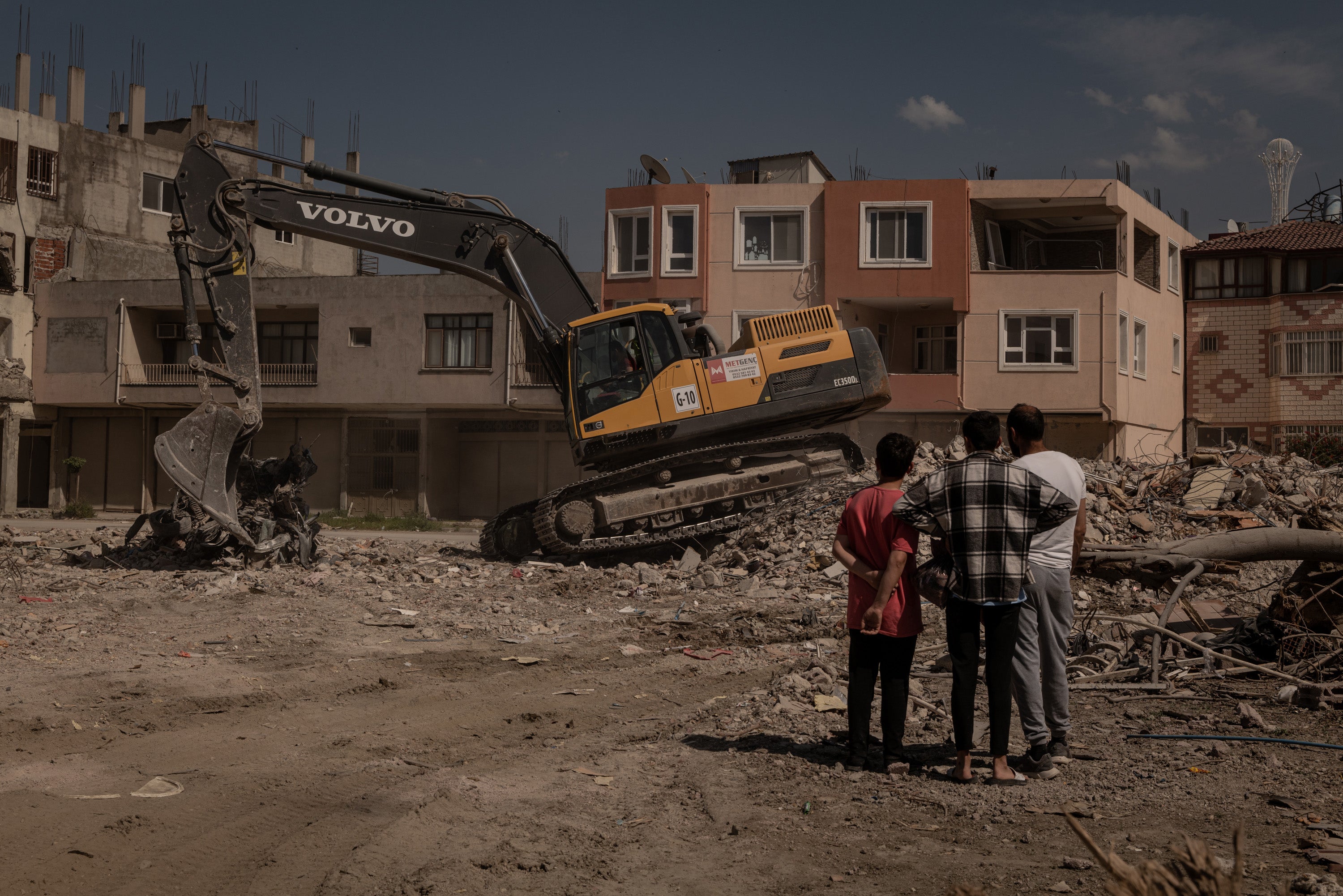
At all hours the dump trucks arrive, hauling earthquake rubble to what has become a growing mountain by the sea – of concrete and steel and blankets and bikes and, residents worry, a stew of toxic substances waiting to be released.
On one side of the spreading mound is a tent camp for people who lost their homes in the earthquakes, where the eyes of some of the occupants have begun to burn. On another is the Capa Restaurant, which serves fish on Samandag’s Mediterranean shore.
“We protested a lot. But they never stopped,” says Isa Micoogullari, the restaurant’s owner, who had planned to reopen soon. But as the debris heap grew, sending plumes of dust toward the restaurant, he reconsidered for the safety of his staff and customers.
Thousands of buildings collapsed instantly when two earthquakes struck on 6 February, killing more than 50,000 people in Turkey and neighbouring Syria and levelling whole neighbourhoods. Tens of thousands of other crippled buildings are in the process of being demolished. The catastrophe created up to 210 million tonnes of rubble, the United Nations has estimated, the building materials mingling with the detritus of countless lives, and emitting what environmental activists fear are harmful substances such as asbestos fibres.
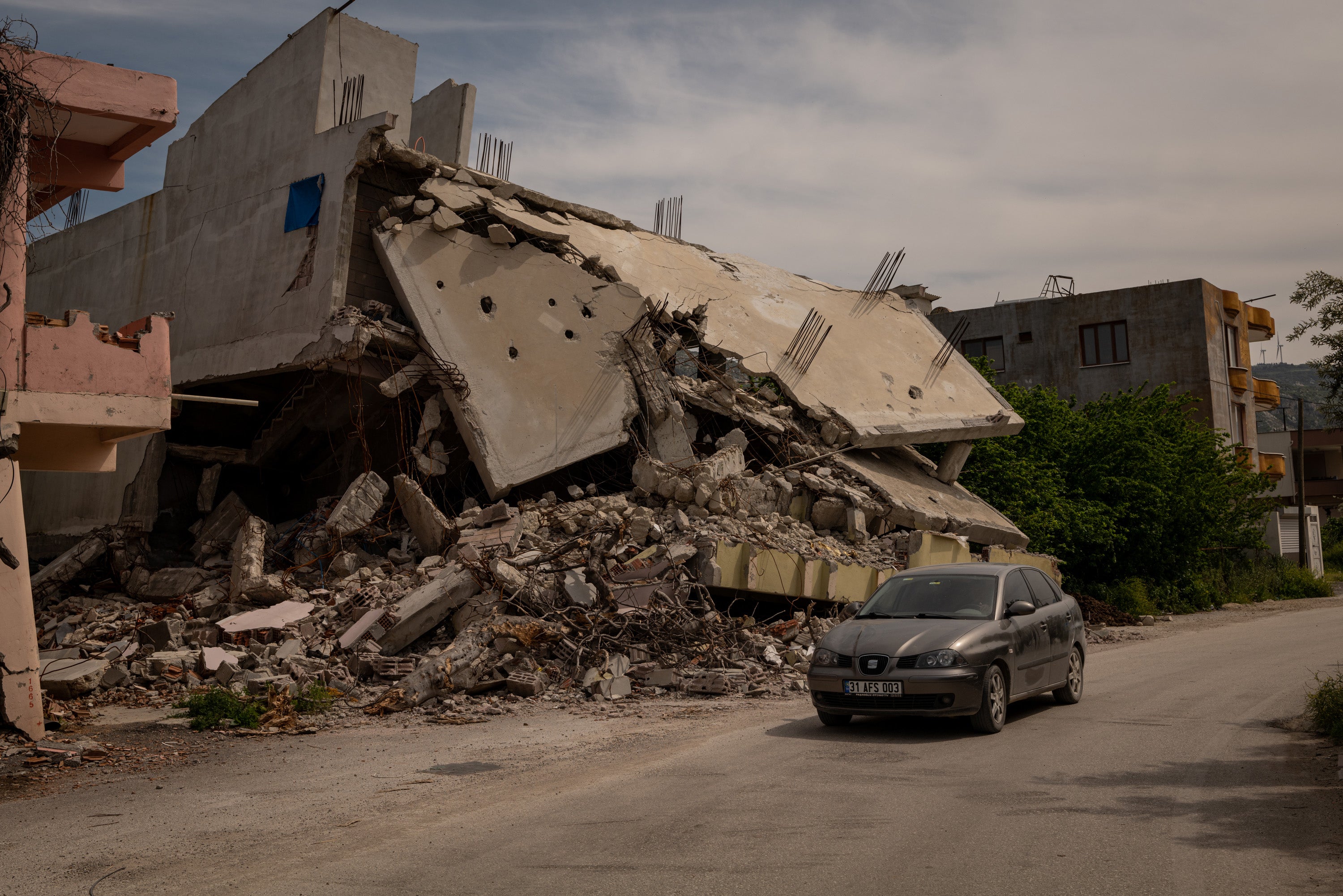
The question of how to dispose of it all safely is a complex task, one of many critical dilemmas facing Turkey in the aftermath of the earthquakes – a national trauma that left grieving cities across the country’s south, and more than a million people homeless. In Samandag, the dump sites are another blow to a wounded town, sparking protests by residents and environmental activists, and adding to longtime complaints of discrimination in a district with a large population of Arab Alawites, members of a heterodox, historically marginalised Muslim sect.
Here, and in other parts of Turkey’s southern Hatay province, there are growing complaints that the disposal effort is being handled recklessly. Along with the debris mound by the Samandag shore – which sits less than a mile from a bird sanctuary – rubble is also being dumped on the sides of major roads, in populated areas, where excavators kick up plumes of dust while sifting through the wreckage.
An endless procession of uncovered dump trucks could be seen rumbling across the province over several days this month, brimming with rebar and crushed concrete as they wound through heavy traffic. The disposal practices, environmental activists say, appeared to violate Turkish regulations on the handling of such debris.
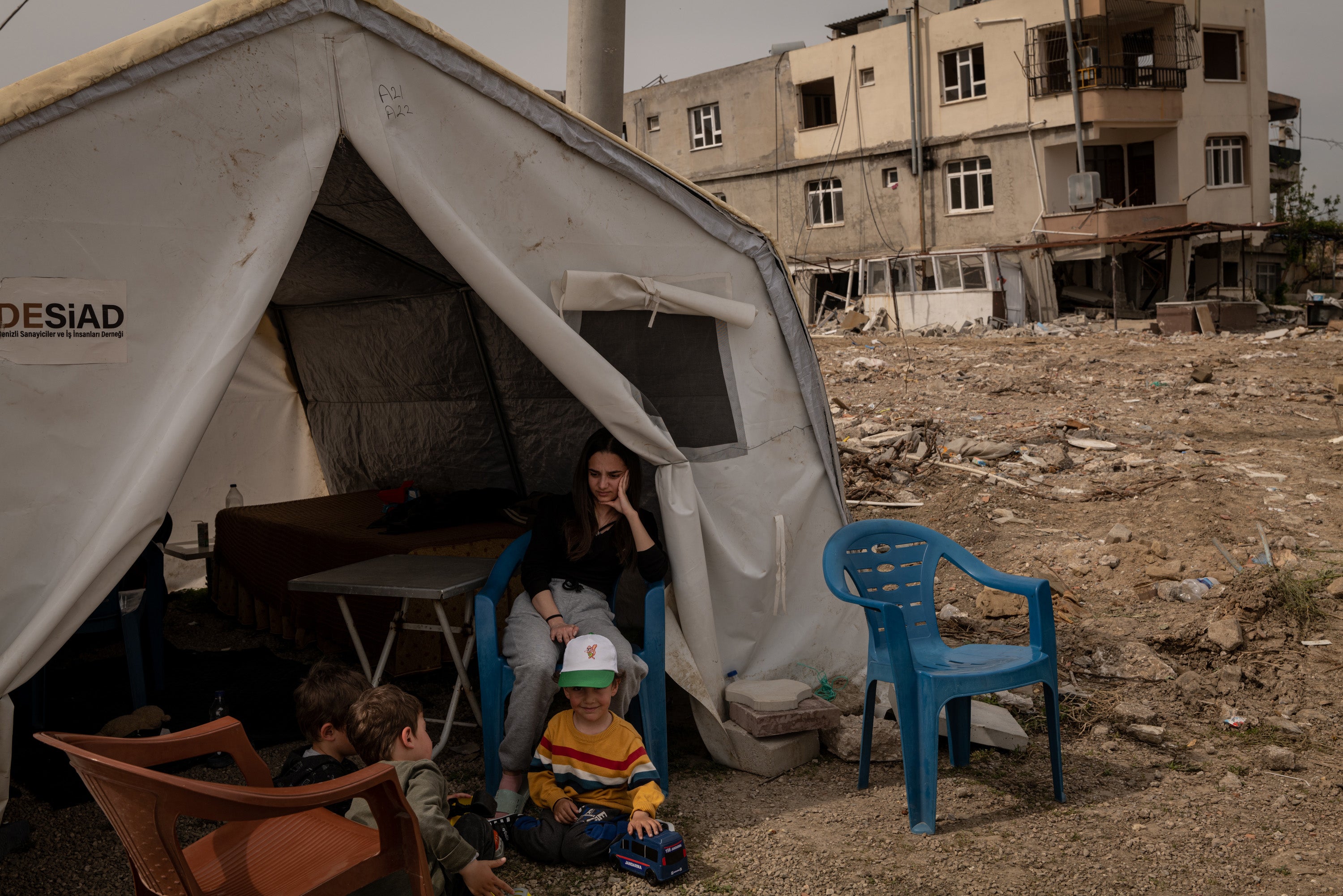
Micoogullari says residents had little insight into the government’s plans. Even some local officials seemed to be in the dark. “All of our questions go unanswered,” he says.
As he speaks, a large dust cloud sweeps off the pile toward his restaurant, as trucks poured debris over the mound’s edge, not far from a small patch of wetlands.
It’s hard for us to recognise the place where we’ve been living for years
Emin Yogurtcuoglu, a birdwatcher and wildlife expert who has drawn attention to the debris pile on social media, posted videos of what he said was a ringed plover, a shorebird, trying to navigate the wetlands where it nests and breeds, its habitat now threatened by concrete and hulking machines. The situation was “gut-wrenching”, he wrote.
Mehmet Emin Birpinar, Turkey’s deputy minister of environment, urbanisation and climate change, has defended the government’s demolition policies in a series of posts on Twitter, saying dump sites in Hatay are being chosen with input from local officials and precautions are being taken to mitigate harm from the wreckage, including testing the air.
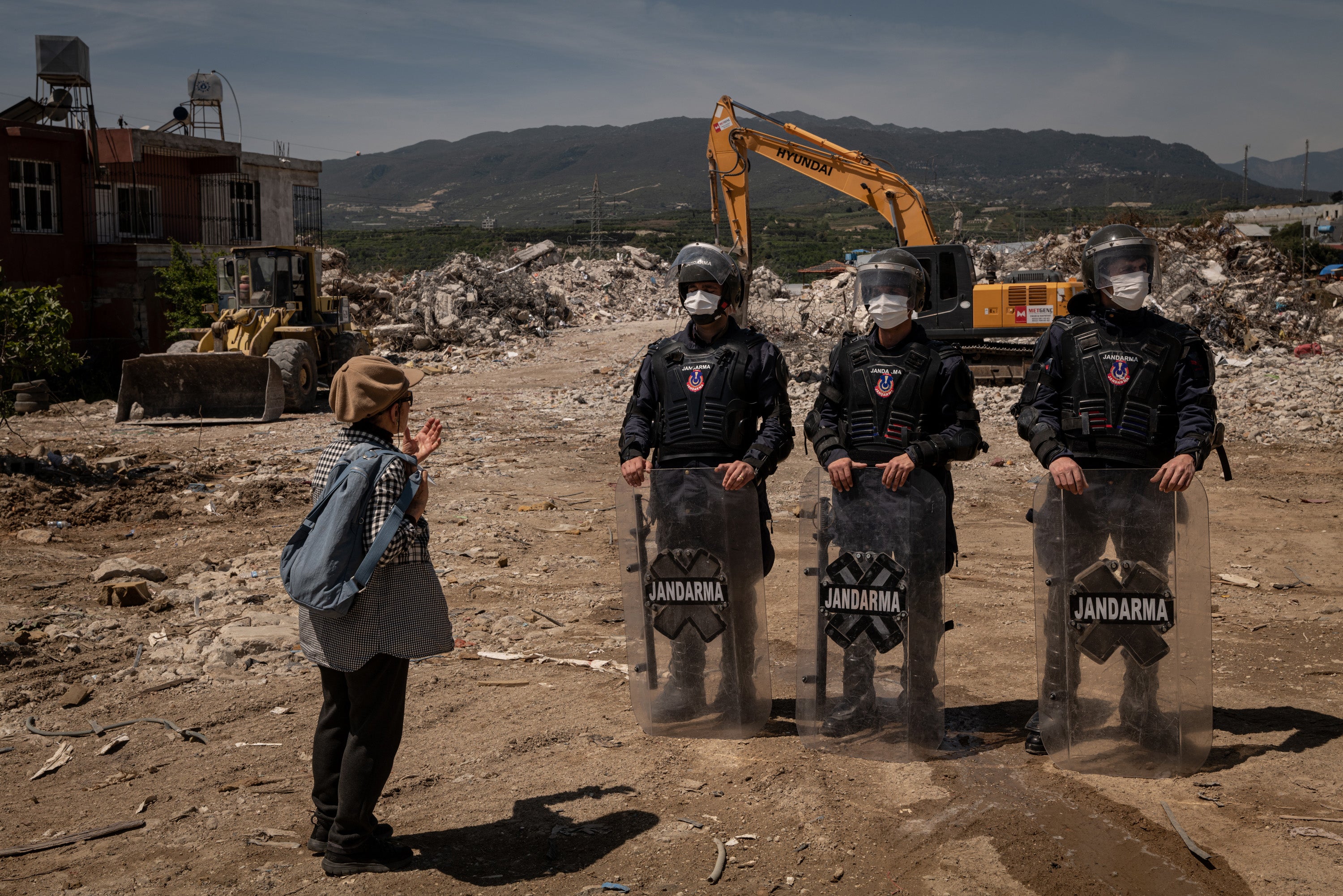
“Regular irrigation” and the placement of soil were being used to prevent “dusting” at the rubble heap outside the restaurant, he said in a post on 16 April. “No traces of asbestos have been found in the air so far,” he wrote.
In response to the post by Yogurtcuoglu, Birpinar said the coastal rubble pile – roughly four stories high and the length of a football field – was “temporary” and that “it is our duty to protect our birds and their young”.
Few residents have disputed the necessity of clearing the debris, as damaged buildings teeter over tents where people shelter, often in the yards of their former homes. But the disposal could occur “in places that are not residential,” says Deniz Aslan, 30, a resident of Samandag who attended a small protest earlier this month, and mentioned other remote sites, like the sides of mountains, as more appropriate dumping grounds. In fact, several rubble heaps have already appeared in such areas.
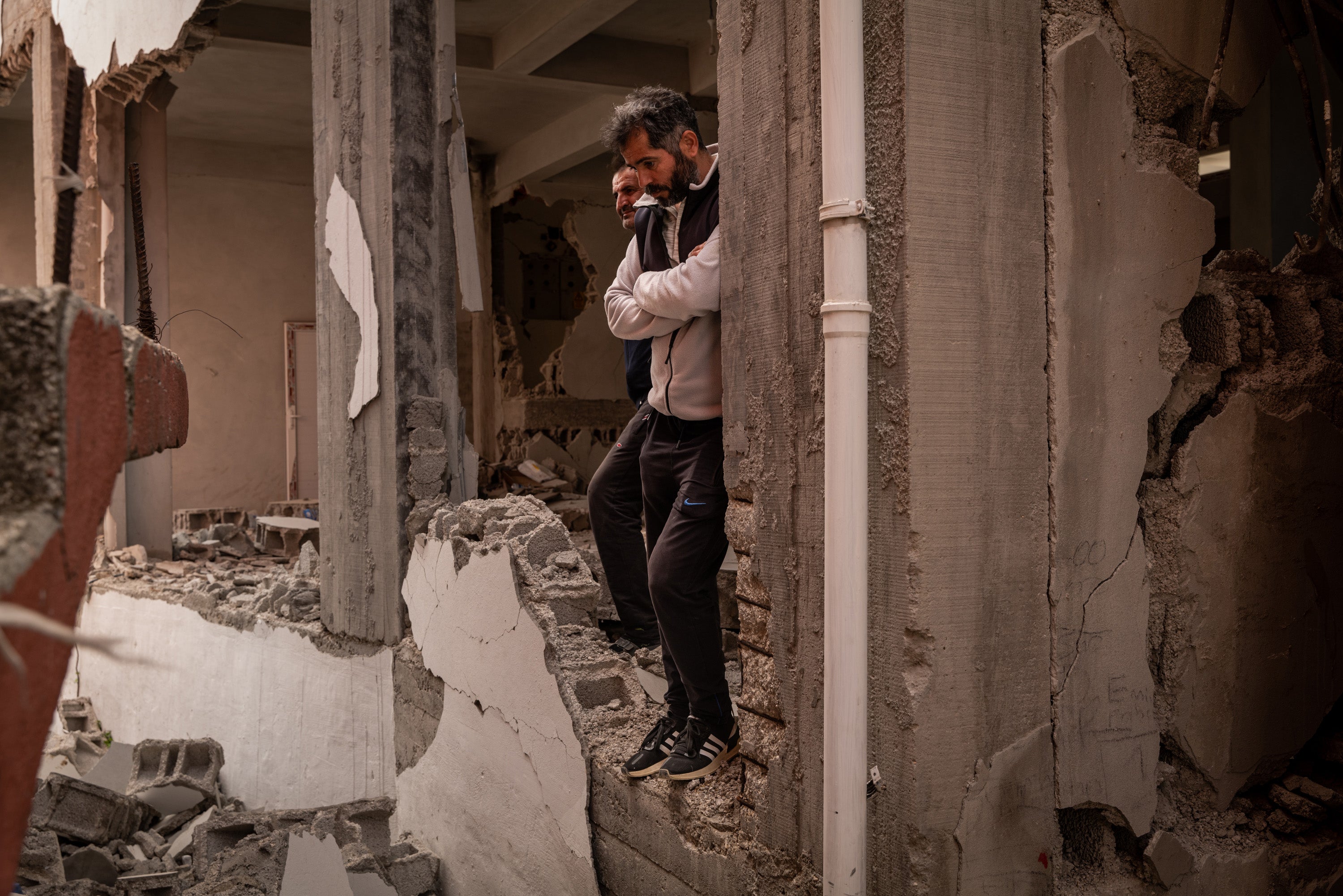
She fears for “the land, the water, the olive trees” but it is more than that. The debris mounds have further scarred a landscape already mutilated by the earthquakes, and it’s unsettling. “It’s hard for us to recognise the place where we’ve been living for years,” she says.
The anxiety courses through Samandag, including in a ramshackle tent camp erected on a road median. In a tent Samira Barsan shares with her husband, Fikret, the pebbled floor is still damp from recent rain. They had lived across the street with their three daughters. Their building collapsed in the earthquakes, killing 12 of their neighbours. The place where it stood is now an empty lot.
President Recep Tayyip Erdogan, who is facing an unexpectedly strong opposition challenge, has made rapid earthquake recovery a central plank of his campaign
Other parts of the earthquake zone have fared better, receiving sturdy containers to house the displaced. But conditions here are desperate. As Barsan speaks, a group of volunteers from the city of Gaziantep arrive in a convoy of cars, delivering slippers and other clothes. She and other residents surge forward, jostling to be first in line to receive the donations.
A day later, anxiety turns to anger, as a small group of protesters march through Samandag’s city centre. “Say stop to the rubble,” they chant.
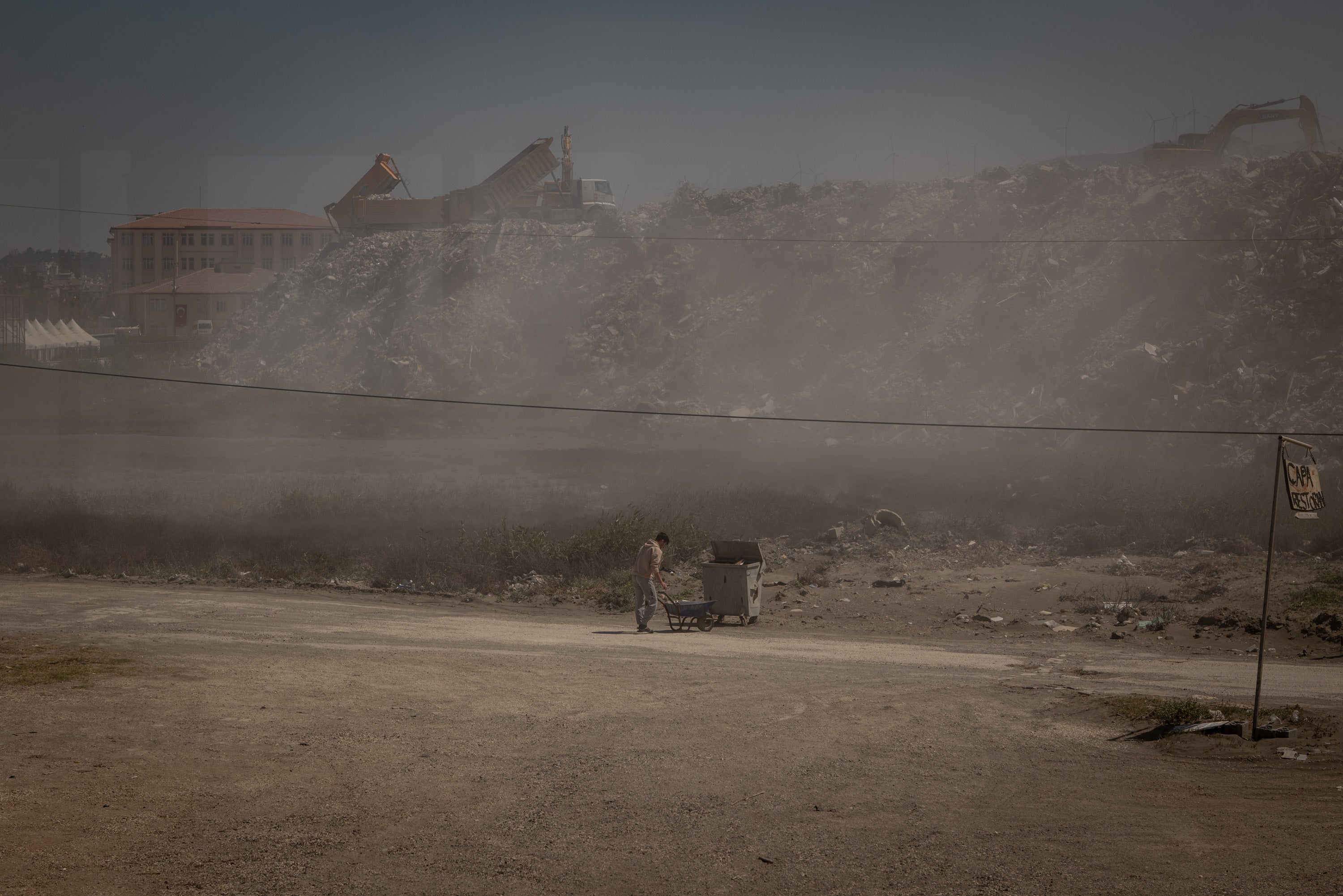
“What you can’t kill with debris, you kill with asbestos,” a sign reads. Others express anger and demand justice for the earthquake’s shocking death toll, widely blamed on shoddy construction practices or the late response of emergency responders. “No forgetting. No forgiveness,” signs read.
“Write it, write it. We are here,” the protesters chant in Arabic, spoken by many of Turkey’s Arab Alawites, as they approach a line of police officers and scuffles break out.
Some in Samandag feel that the clean-up effort was being carried out with unnecessary haste to coincide with a pivotal Turkish election next month. President Recep Tayyip Erdogan, who is facing an unexpectedly strong opposition challenge, has made rapid earthquake recovery a central plank of his campaign, including the building of hundreds of thousands of new homes.
Fernur Bahceci, an environmental activist from Istanbul who has helped organise the protests, says there were 22 dump sites in Hatay province, an area that also includes the city of Antakya, parts of which were totally destroyed by the earthquakes. Environmental groups are also in the process of analysing the air around the sites, she says. They are concerned not only about asbestos, which was banned in Turkey in 2010, but other hazardous substances like microfibres.
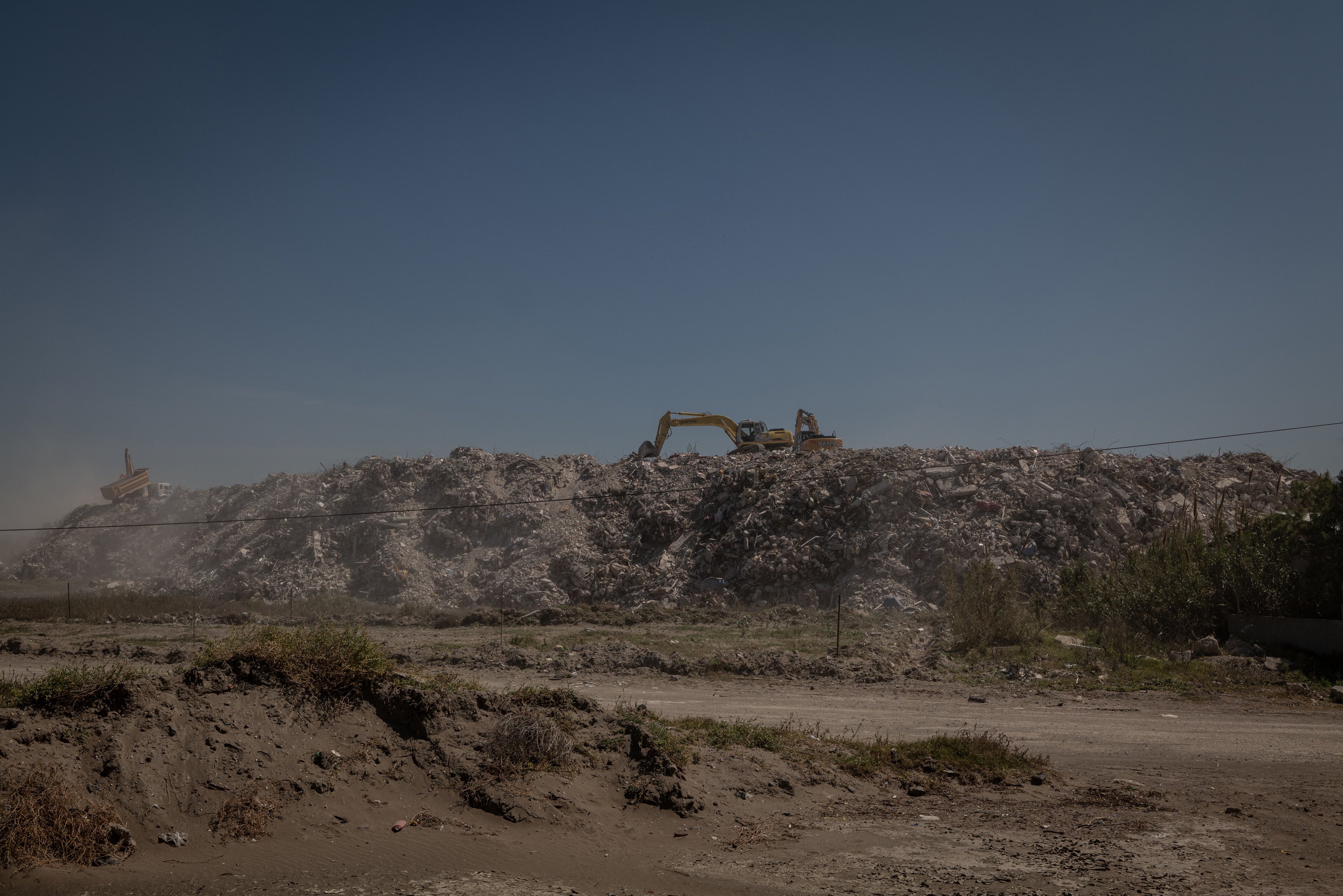
Construction crews at the sites were “separating the rubble, and they should not be doing that”, she says, referring to a process that requires care, including the constant watering of debris and the expert removal of toxic materials. Few of the workers at these sites were wearing protective masks.
In the city centre, Guney Oruc, a 36-year-old musician, watches a lone excavator dig at the remains of his old building, where he had lived for most of his life. “It hurts a lot,” he says, standing on a nearby corner as the excavator strikes columns, trying to bring down what’s left of the structure. “Every time it hits the building.”
He is living with his aunt in a greenhouse for tomatoes, which is full of “snakes and bugs”, he says. He has tried to find them a container, but no one seems to know where to apply. Officials from the local disaster management agency sent him to the district manager. The district manager sent him back to the disaster agency.
“The bureaucracy here is horrible,” he says. “We were never able to get proper services from the government.”
The rubble heaps are another sign of official disrespect, he feels – the legacy of one disaster, and maybe the start of one to come.
“They say Hatay will be full of cancer in 20 years,” he says.
© The Washington Post






Join our commenting forum
Join thought-provoking conversations, follow other Independent readers and see their replies
Comments